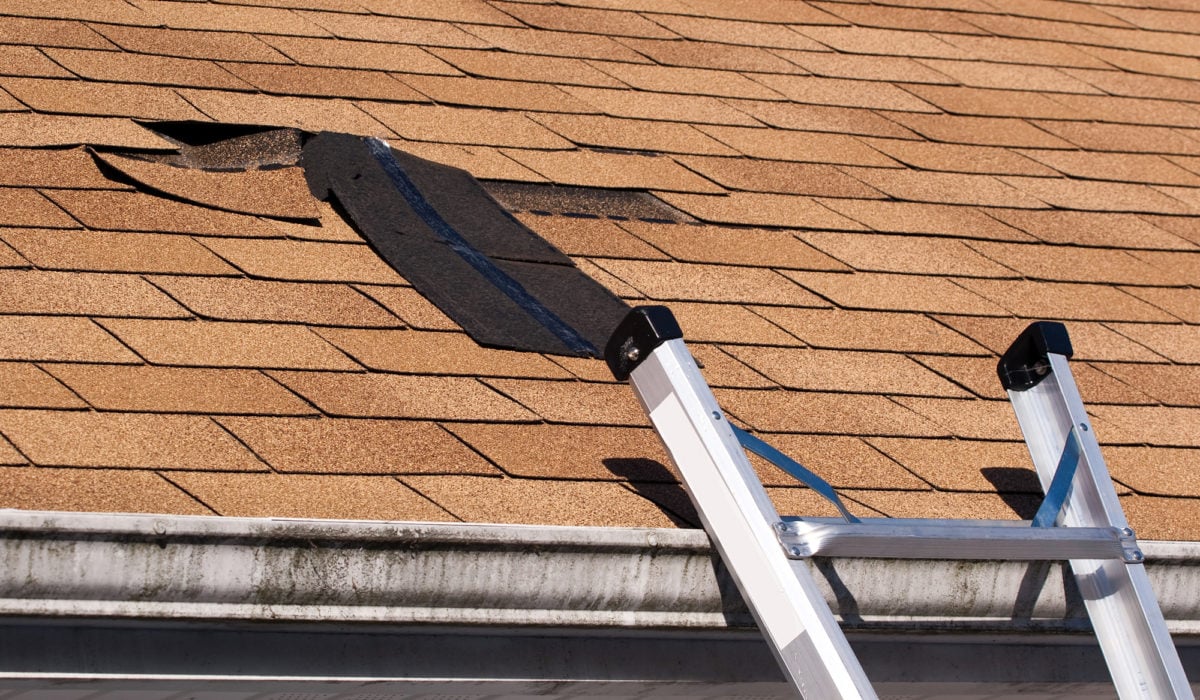- 0 Comment
How Can I Tell If I Have Missing Shingles?
Your home’s roof is your first line of defense against the elements. It shields you from rain, snow, wind, and the scorching sun. To ensure that your roof continues to provide adequate protection, you need to keep an eye on its condition. One common issue that homeowners often encounter is missing roof shingles. But how can you tell if you have missing shingles? In this blog post, we will explore the signs to look for and explain why addressing missing shingles promptly is crucial.
1. Visual Inspection: One of the simplest methods to check for missing roof shingles is through a visual inspection. You can do this either from the ground using binoculars or by safely climbing a ladder for a closer look. Look for any noticeable gaps or areas where shingles appear to be absent. Missing shingles can disrupt the uniformity of your roof’s surface, making them relatively easy to spot.
2. Shingle Debris: Following a severe storm or strong winds, you may discover shingle debris in your yard or scattered around your property. This debris could be a clear indicator that your roof has lost shingles. Shingle debris may consist of individual shingles, shingle fragments, or granules that have worn off from the shingles.
3. Water Leaks: Missing roof shingles can lead to water leaks inside your home. If you observe water stains on your ceiling or walls, it could be a sign that your roof’s integrity has been compromised. Inspect your attic for any indications of water intrusion, such as damp insulation, dark spots, or mold growth. Addressing these issues promptly is essential to prevent further damage and potential health hazards.
4. Increased Energy Bills: Missing shingles can affect your home’s energy efficiency. When your roof is compromised, it may allow warm or cold air to escape, leading to increased heating or cooling costs. If you’ve noticed a significant spike in your energy bills, it could be related to missing shingles, and it’s worth investigating further.
5. Age of Your Roof: Another factor to consider is the age of your roof. Shingles have a finite lifespan, and over time, they can become brittle, crack, or curl, making them more prone to coming loose or detaching in severe weather conditions. If your roof is nearing the end of its expected lifespan, missing shingles may be a common occurrence.
6. Inspect After Severe Weather: After a storm with high winds, hail, or heavy rainfall, it’s a good practice to inspect your roof for damage, including missing shingles. Even if you don’t notice any immediate issues, these weather events can weaken your roof’s structure, making it more susceptible to future problems.
7. Check the Gutters: Your gutters can provide valuable clues about the condition of your roof. If you find an excessive amount of shingle granules in your gutters, it could indicate that your shingles are deteriorating and may be prone to coming loose or falling off.
8. Moss or Algae Growth: While not directly related to missing shingles, the presence of moss, algae, or other organic growth on your roof can be a sign of underlying issues. These growths can loosen shingles over time and make them more susceptible to wind damage.
In conclusion, keeping an eye out for missing roof shingles is essential for the long-term health of your home. Visual inspections, checking for shingle debris, monitoring for water leaks, and considering the age of your roof are all important steps in detecting missing shingles. Addressing this issue promptly can prevent further damage, maintain your home’s energy efficiency, and extend the lifespan of your roof. Regular roof maintenance and inspections are key to ensuring that your home remains safe and protected from the elements. If you suspect missing shingles or any roof damage, it’s advisable to consult with a professional roofing company to assess the situation and make necessary repairs or replacements. Remember that a well-maintained roof is crucial in safeguarding your investment and providing you with peace of mind.

